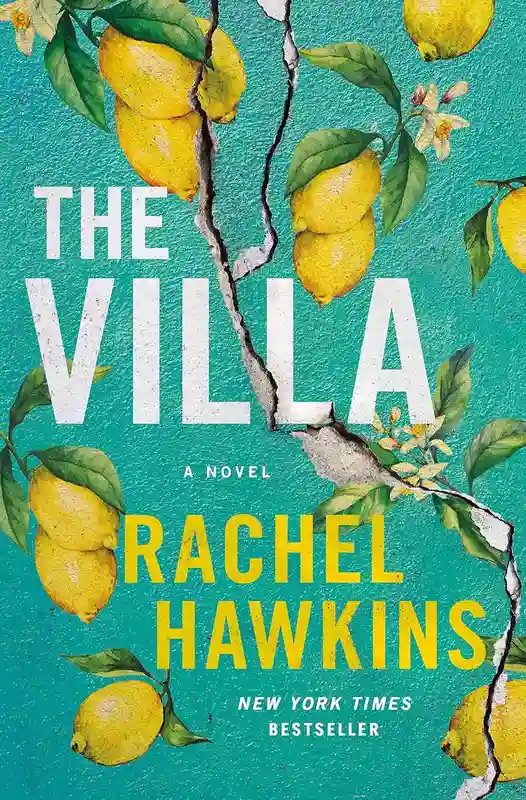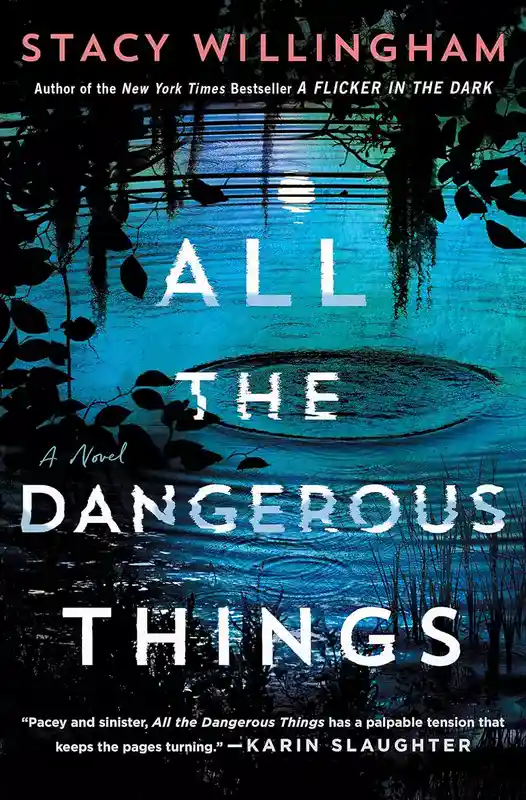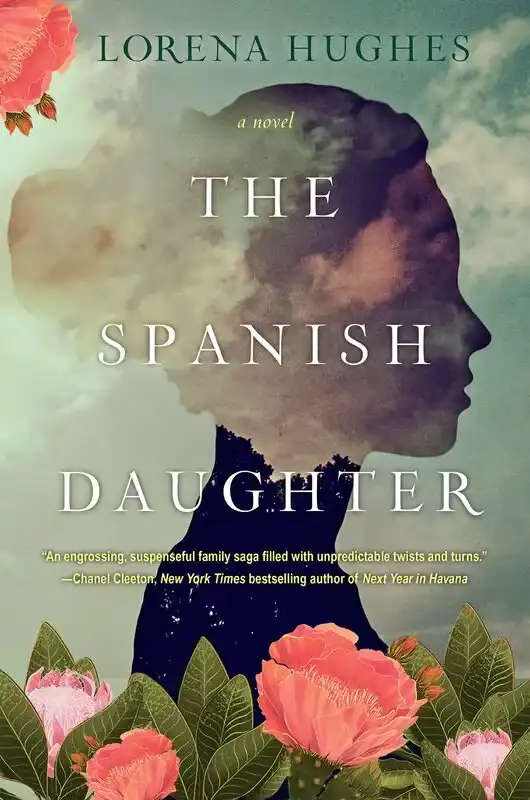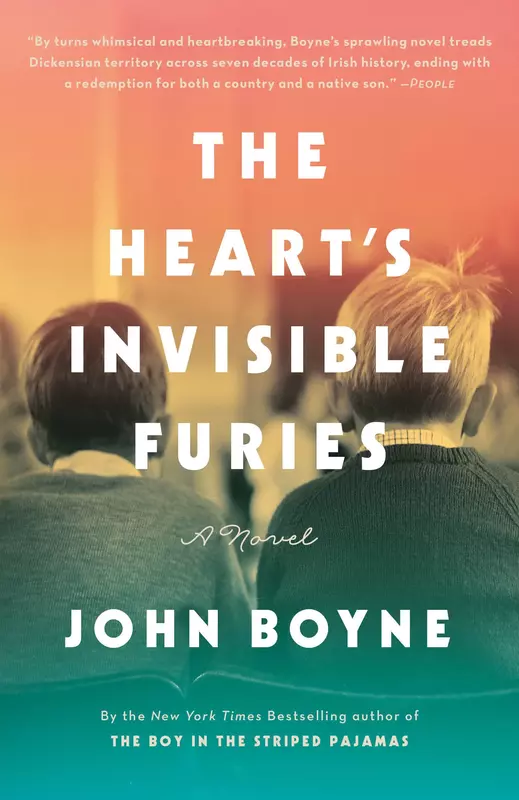This post may contain affiliate links. Read more here.
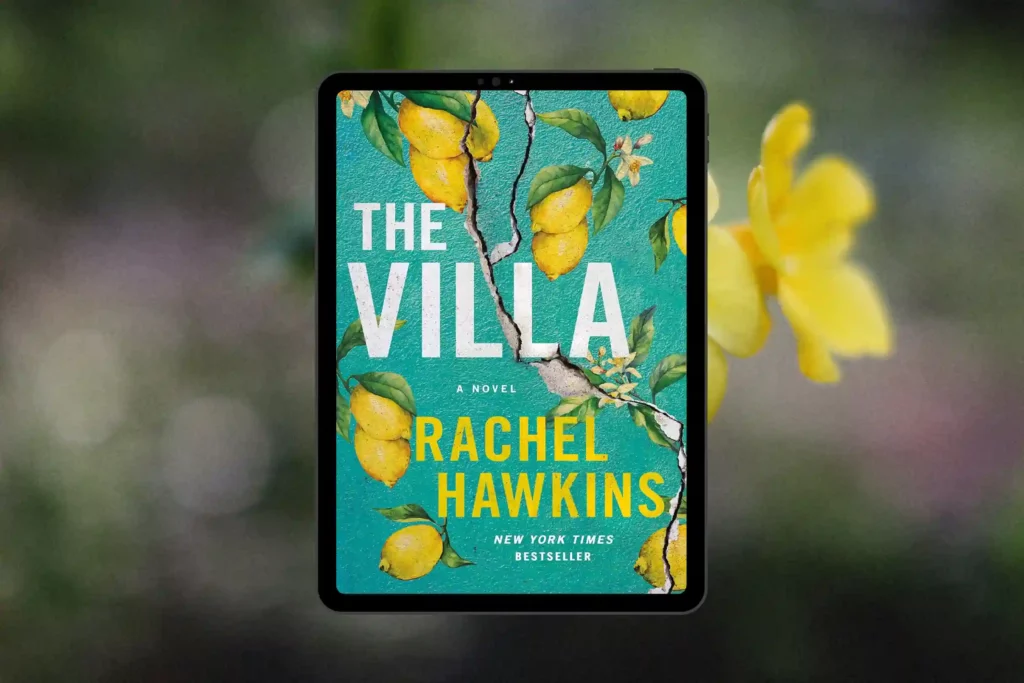
Book club questions for The Villa by Rachel Hawkins explore the themes of friendship, betrayal, and the evolving nature of relationships.
The book made me ponder the profound influence art can have on people, often surpassing the impact of the creation process itself. It raises intriguing questions about how artists share their creations with the world, where these intimate creations take on a life of their own in the eyes of fans. It left me contemplating the unique relationship between artists, their creations, and the audiences who form a distinct connection with the work.
I really loved this novel. It kept me guessing and I didn’t want to put it down. It also has a twist on the ending that is extremely unexpected!
Let me know your thoughts about the novel! Feel free to comment below.
The Villa by Rachel Hawkins
In this blog post you will find the discussion questions for The Villa by Rachel Hawkins.
Book club questions may also prompt discussions about the characters’ struggles with fame, control, the sacrifices made in the pursuit of artistic expression, various literary inspirations and historical events woven into the novel, as well as the Villa Aestas itself — a place with a dark history that holds memories and secrets.
Have a wonderful book club discussion! ✨
About the Author | Book Club Questions | Additional Recommendations
Summary | Characters Guide | Ending Explained
About the Story
The Villa follows childhood friends Emily and Chess, now in their 30s, decide to reconnect on a girls’ trip to Villa Aestas in Orvieto, Italy. The villa, once known as Villa Rosato, has a notorious past involving a rock star, Noel Gordon, and a series of events leading to a brutal murder in 1974.
As Emily delves into the villa’s complex history, she uncovers the story of that fateful summer, involving musicians Pierce Sheldon and Mari. Emily suspects there might be more to Pierce’s murder than the apparent sex, drugs, and rock & roll gone wrong. She believes clues may be hidden in the iconic works left behind by Mari and Lara, leading her to unravel a sinister mystery.
However, as Emily gets closer to the truth, tensions rise between her and Chess. Secrets from the past and present betrayals come to light, creating a dangerous atmosphere. This is a book that will keep you on the edge of your seat, as characters confront a history that refuses to stay buried.
About the Author
Rachel Hawkins, also known as Erin Sterling, was born in Virginia and raised in Alabama. Her writing journey began in Kindergarten with a thrilling tale involving a unicorn, a witch, and a princess, earning praise from her teacher and mother.

Rachel has since written over a dozen books for children and adults, published in more than twenty countries. As Rachel Hawkins, she penned the New York Times bestselling The Wife Upstairs, a Southern Gothic twist on Jane Eyre, lauded as a thrill ride and a gothic thriller.
Under the name Erin Sterling, Rachel writes paranormal romantic comedies, with her debut, The Ex Hex, earning acclaim as a Book of the Month pick and a New York Times and USA Today Bestseller.
Currently residing in Auburn, Alabama, with her husband, son, and five cats, Rachel enjoys reading, cooking, and exploring various creative hobbies. You can find her on Twitter and Instagram.
Book Club Questions for The Villa
Disclaimer: the following discussion questions contain spoilers, so proceed with caution if you haven’t finished the book yet.
- How do Emily and Chess’s friendship dynamics change throughout the novel, especially as they confront their own unresolved issues and delve into the exploration of 1974? Discuss the impact of their shared creative project on their relationship.
- The novel is set between London in 1974 and the present day. How do these two time periods contribute to the overall narrative and character development? In what ways do the historical events influence the present-day decisions of the characters?
- Mari’s upbringing is marked by tragedy, challenges, and complex relationships. How does Mari’s background and the events of her past shape her character and influence her decisions, particularly in 1974 and in the present day?
- Pierce’s death has profound effects on the characters in the 1970s storyline. Explore how each character copes with this loss and how it shapes their individual trajectories. How does grief manifest differently for each character?
- Analyze Matt’s desire for control over Emily and how it manifests throughout the novel. Compare and contrast the ways in which the theme of having children or experiencing the loss of a child affects Emily and Matt, as well as Mari, Lara, and Pierce.
- Mari’s romantic life and the priorities within her relationship with Pierce are explored in relation to her writing. How does Mari navigate the challenges of balancing personal relationships with her artistic pursuits? Discuss the expectations placed on Mari and Lara as muses and how they defy these expectations to create groundbreaking art.
- Mari and Lara defy expectations placed on them as muses and companions to male artists, creating groundbreaking art during the summer. What does their defiance prove, and to whom? Reflect on whether women today still face the need to prove themselves in certain spaces.
- Mari reflects on leaving behind a certain legacy and reclaiming the narrative. How does the novel explore the idea of controlling how one’s art is interpreted after death? What does it suggest about the inevitability of fate and the unpredictability of how stories unfold?
- Villa Rosato in Italy serves as a backdrop for creative pursuits by Mari, Lara, and Noel. How does the setting impact their creative endeavors, and what role does the villa play in intertwining their stories of tragedy and creativity?
- The novel is filled with secrets and betrayals, especially between Emily and Chess. How do these secrets impact the characters individually and their relationship as co-authors? Discuss the consequences of hidden information throughout the story.
- What is the use of literary elements such as excerpts from Mari’s novel, songs, and other creative works within the narrative? How do these elements enhance the storytelling, and what themes do they contribute to the overall plot?
- Explore the motivations of Emily and Chess in embarking on the creative project related to Mari’s story. How do their personal motivations, such as Emily’s desire to move away from the Petal Bloom series and Chess’s interest in self-help, shape the direction of their collaboration?
- Discuss the significance of Mari’s diary as a narrative device. How does the discovery of the diary impact Emily’s understanding of the events in 1974, and how does it contribute to the overall mystery of Pierce’s murder?
- Analyze the novel’s portrayal of the creative process, both in the present day and in 1974. How do Emily and Mari use writing as a means of expression and healing, and how does it serve as a backdrop for the unfolding events in the story?
- Examine the symbolism behind Mari’s initials carved into a window and Emily’s discovery near these carvings. How do these details symbolize the connection between past and present, and what role do they play in unraveling the mysteries of the story?
- Delve into the role of music, particularly Lara’s lyrics from “Aestas” and Noel’s musical career, in the narrative. How does music contribute to the atmosphere and emotions of the story, and what insights does it provide into the characters’ lives?
- Discuss the narrative technique of parallel storylines, alternating between the present day and 1974. How does this storytelling method enhance the suspense and reveal the interconnectedness of the characters’ lives across different time periods?
- Analyze the theme of betrayal and secrets, both in Emily and Chess’s relationship and in the broader context of Mari’s story. How do these themes drive the plot forward, and what are the consequences of the characters’ actions?
- Track the evolution of Emily’s writing throughout the novel, from her initial focus on the Petal Bloom series to the mix of memoir and nonfiction. How does her writing reflect her personal growth and changing perspectives?
- Explore how past traumas, such as Mari’s loss of her child and Emily’s struggles during her marriage, continue to influence the characters in the present day. How do these traumas shape their decisions and relationships?
- Discuss the resolution of Mari’s story, particularly the revelation of the two endings in 1993. How does this resolution impact the overall narrative and the understanding of Mari’s character?
- Discuss how past traumas, particularly Mari’s experiences in 1974, continue to haunt and influence the characters in the present day. How do these traumas shape their decisions, relationships, and the overall trajectory of the story?
- The notion that “Houses remember” and the belief that Villa Aestas is cursed are recurring themes. Discuss the significance of these statements and explore the idea of places holding memories. Do you think locations can be imbued with a sense of the past?
- The author drew inspiration from the summer of 1816, where Percy and Mary Shelley stayed at a villa on Lake Geneva. Identify parallels between the 1970s storyline and this moment in literary history. How does historical inspiration contribute to the novel’s richness?
- Characters in different time periods expect to find inspiration at Villa Aestas. Discuss the reasons behind this expectation and how Lara’s album “Aestas” and Mari’s “Lilith Rising” make the villa a central character in the narrative. How does the villa serve as a source of creativity?
- Emily and Chess’ book within the novel is a blend of true crime/nonfiction, memoir, and literary mystery. How do you imagine their book, “The Villa,” differs from the novel you read? Consider the layers of storytelling and the role of the storyteller in shaping the narrative.
- Examine the theme of fame and its costs, as portrayed through Emily’s struggles with her literary career and the complex relationships between the characters. How does the pursuit of fame impact their lives, and what sacrifices are made along the way?
- The novel presents alternative endings and truths, both in Mari’s fictional storytelling and in the characters’ actions. How do these alternative narratives contribute to the overall themes of the novel, and what impact do they have on the characters’ perceptions of reality?
- Trace the evolution of characters like Emily, Chess, and Mari from the beginning of the novel to its conclusion. How do their choices, experiences, and relationships shape their growth, and what lessons do they learn by the end?
- Analyze the symbolic significance of Villa Aestas in the novel. How does the villa represent history, haunting, and the interconnected lives of the characters? Discuss its role as a setting and its impact on the characters’ journeys.
- How do characters such as Mari, Chess, and Emily seek empowerment, and what choices do they make in pursuit of freedom? Discuss the complexities of their journeys.
- Reflect on Mari’s decision to rewrite the ending of her and Pierce’s story. How does her altered narrative influence the events in Emily’s life? Consider the power of storytelling and its impact on personal narratives.
Additional Recommendations
Hope you enjoyed the book club discussion questions and reading guide for The Villa by Rachel Hawkins. Here are some more of my book club recommendations with themes related to this book, along with their synopses:
All the Dangerous Things by Stacy Willingham
One year ago, Isabelle Drake’s life changed forever: her toddler son, Mason, was taken out of his crib in the middle of the night while she and her husband were asleep in the next room. With little evidence and few leads for the police to chase, the case quickly went cold. However, Isabelle cannot rest until Mason is returned to her―literally.
Except for the occasional catnap or small blackout where she loses track of time, she hasn’t slept in a year.
Isabelle’s entire existence now revolves around finding him, but she knows she can’t go on this way forever. In hopes of jarring loose a new witness or buried clue, she agrees to be interviewed by a true-crime podcaster―but his interest in Isabelle’s past makes her nervous. His incessant questioning paired with her severe insomnia has brought up uncomfortable memories from her own childhood, making Isabelle start to doubt her recollection of the night of Mason’s disappearance, as well as second-guess who she can trust… including herself. But she is determined to figure out the truth no matter where it leads.
The Spanish Daughter by Lorena Hughes
Perfect for fans of Julia Alvarez and Silvia Moreno-Garcia, this exhilarating novel transports you to the lush tropical landscape of 1920s Ecuador, blending family drama, dangerous mystery, and the real-life history of the coastal town known as the “birthplace of cacao.”
As a child in Spain, Puri always knew her passion for chocolate was inherited from her father. But it’s not until his death that she learns of something else she’s inherited—a cocoa estate in Vinces, Ecuador, a town nicknamed “París Chiquito.” Eager to claim her birthright and filled with hope for a new life after the devastation of World War I, she and her husband Cristóbal set out across the Atlantic Ocean. But it soon becomes clear someone is angered by Puri’s claim to the estate…
When a mercenary sent to murder her aboard the ship accidentally kills Cristóbal instead, Puri dons her husband’s clothes and assumes his identity, hoping to stay safe while she searches for the truth of her father’s legacy in Ecuador. Though freed from the rules that women are expected to follow, Puri confronts other challenges at the estate—newfound siblings, hidden affairs, and her father’s dark secrets. Then there are the dangers awakened by her attraction to an enigmatic man as she tries to learn the identity of an enemy who is still at large, threatening the future she is determined to claim…
The Heart’s Invisible Furies by John Boyne
From the beloved New York Times bestselling author of The Boy In the Striped Pajamas, a sweeping, heartfelt saga about the course of one man’s life, beginning and ending in post-war Ireland
Cyril Avery is not a real Avery — or at least, that’s what his adoptive parents tell him. And he never will be. But if he isn’t a real Avery, then who is he?
Born out of wedlock to a teenage girl cast out from her rural Irish community and adopted by a well-to-do if eccentric Dublin couple via the intervention of a hunchbacked Redemptorist nun, Cyril is adrift in the world, anchored only tenuously by his heartfelt friendship with the infinitely more glamourous and dangerous Julian Woodbead. At the mercy of fortune and coincidence, he will spend a lifetime coming to know himself and where he came from – and over his many years, will struggle to discover an identity, a home, a country, and much more.
In this, Boyne’s most transcendent work to date, we are shown the story of Ireland from the 1940s to today through the eyes of one ordinary man. The Heart’s Invisible Furies is a novel to make you laugh and cry while reminding us all of the redemptive power of the human spirit.
Happy reading! ❤️
